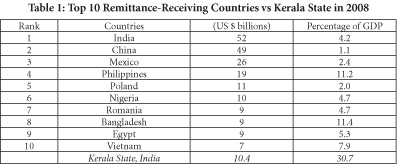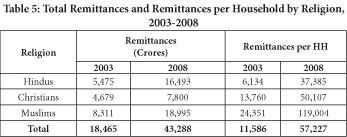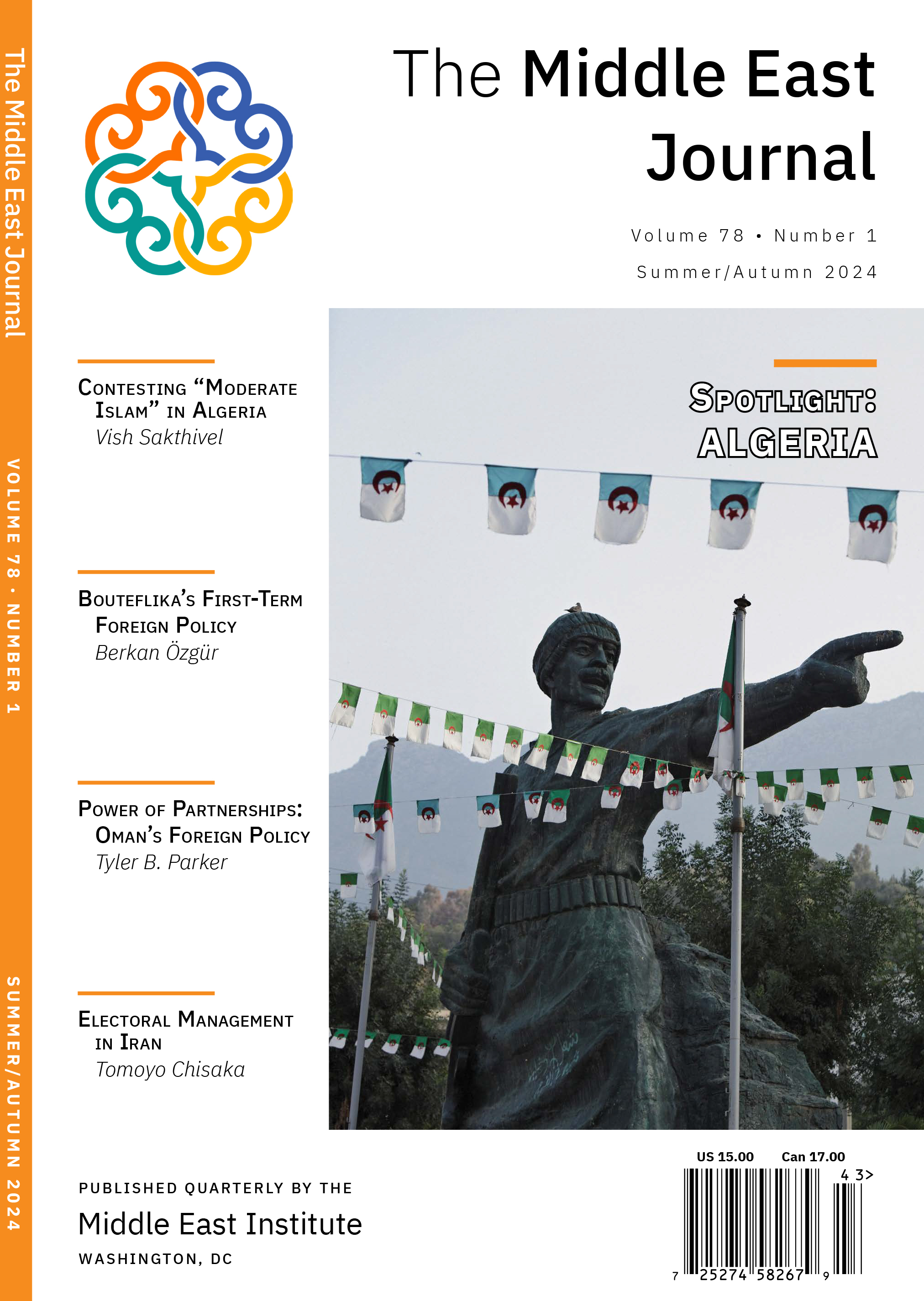The money that migrants send home is important not only to their families but also to their country’s balance of payments. In many developing countries, remittances represent a significant proportion of the Gross Domestic Product (GDP) as well as foreign exchange earning. In 2008, India was the leading country in the world in terms of the volume of remittances with $52 billion, which contributed 4.2% of GDP (Table 1).1

Table 2 shows the trends in remittances for India over the past 40 years. According to the estimates of the World Bank, remittances to the country have grown steadily from $120 million in 1970, to 2.76 billion in 1980, $3.29 billion in 1991, $12 billion in 2000, and to about $52 billion in 2008. While the World Bank projected remittances to India at $47 billion for 2009, a report prepared by the Centre for Development Studies projected that the figure would be $53 billion.2

Table 3, which provides the trends in remittances to Kerala between 1991 and 2008 indicates a continuous growth of such remittances.

The flow of about Rs. 43,288 crores into the Kerala economy in 2008 by way of remittances had a very significant impact on the state’s economy and the living conditions of its citizens. It is important to state 88.5% of emigrants from Kerala went to the Gulf and as such they contribute a large chunk of the remittances that flow into Kerala.
Based on a total population of 30,371 crores in Kerala in 2008, the remittance of Rs. 43,288 crores amounted to an average per capita remittance of Rs. 12,840 and an average household remittance of Rs. 57,227 per year. Remittances thus make a substantial contribution to the annual income of the households in Kerala.
Remittances also are associated with the macroeconomic indicators of the state. To begin with, remittances in Kerala in 2008 were nearly a third (31%) of Kerala’s NSDP. The per capita income of the state excluding remittances stood at Rs. 41,814, but was as much as Rs. 54,664 when remittances also were included (Table 4).

Other statistics also indicate the importance of remittances in Kerala’s economy. Remittances were 1.74 times the revenue receipts of the state. Remittances in Kerala were 5.5 times the finance Kerala received from the central government and 2.3 times the annual non-plan expenditure of Kerala’s government. In 2008, remittances were sufficient to wipe out 70% of the state’s debt. Remittances to Kerala were 36 times the export earnings from cashews and 30 times that from marine products.
Looking at the breakdown of the total remittance of Rs. 43,288 crores by household type, we see that Rs. 16,493 crores was recevied by Hindu households, Rs. 7,800 crores was received by Christian households and Rs. 19,000 crores was received by Muslim households. The average remittances per household was Rs. 37,385 among Hindus, Rs. 50,107 among Christians, and Rs. 119,004 among Muslims (Table 5).

In 2008, the emigration rate per 100 households was 29, but only 18% of the households had an emigrant member because some had more than one emigrant. The proportion of households that received remittances was even smaller. The 2008 Kerala Migration Survey estimated that only 17.1% of households had received cash remittances (Figure 1). Muslim households received the largest proportion of remittances and Hindu households, the smallest.

Total remittances by district are given in Figure 3. Remittances vary considerably among districts. Malappuram district leads with a total of Rs. 6,486 crore as remitances, followed by Thrissur district with remittances amounting to Rs. 5,961 crore and Thiruvananthapuram district with Rs. 4,801 crore. Idukki and Wayanad come last — while Malappuram accounts for 15% of the state’s remittances, Idukki accounts for less than 0.5%.


The average remittance per household in Malappuram was more than Rs. 1 lakh (Rs. 103,585) which is nearly double the state average (Rs. 57,227). The other districts with high average remittance per household were Thrissur, Pathanamthitta, Kollam, and Kozhikode. The average remittances per household in Idukki district were less than a tenth of the state average for Pathanamthitta, Kollam, and Kozhikode. The average remittances per household in Idukki district was less than a tenth of the state average.
Conclusion
The impact of remittances on Kerala is manifested in household consumption, saving and investment, the quality of houses, and the possession of modern consumer durables. Remittances also play a major role in enhancing the quality of life and contribute to a high human development index for Kerala in terms of education and health, along with the reduction of poverty and unemployment. The Gulf, which is home to a large majority of emigrants from Kerala, has figured prominently in this equation.
1. World Bank, “Migration and Remittance Trends 2009: A better-than-expected outcome so far, but significant risks ahead,” Migration and Development Brief 11, Migration and Remittances Team, Development Prospects Group, World Bank (2009); K.C. Zachariah and S. Irudaya Rajan, “Migration Monitoring Study, 2008: Emigration and Remittances in the Context of Surge in Oil Prices,” CDS, Kerala, 2009.
2. S. Irudaya Rajan and D. Narayana, “The Financial Crisis in the Gulf and its Impact on South Asian Migrant Workers,” Report submitted to the Asian Development Bank and the Ministry of Overseas Indian Affairs, Government of India, 2009.
The Middle East Institute (MEI) is an independent, non-partisan, non-for-profit, educational organization. It does not engage in advocacy and its scholars’ opinions are their own. MEI welcomes financial donations, but retains sole editorial control over its work and its publications reflect only the authors’ views. For a listing of MEI donors, please click here.












